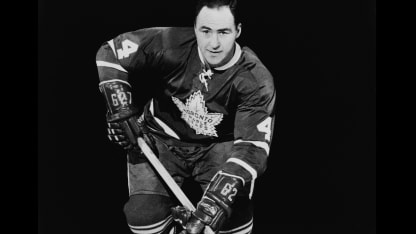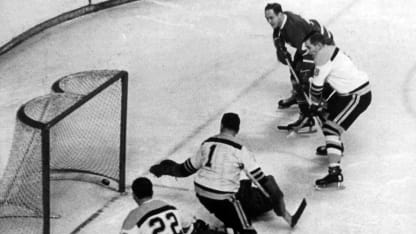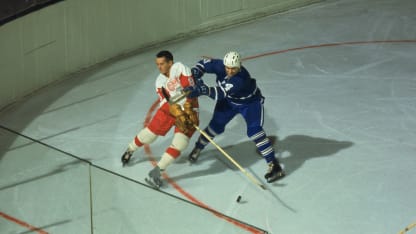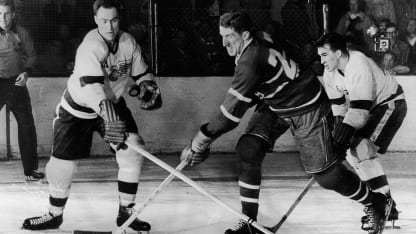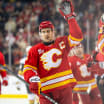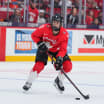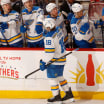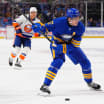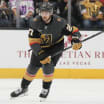Defensively, Kelly proved so exceptional that his coaches took advantage of his superb conditioning by giving him all the ice time he could handle. He recalled in "Legends of Hockey" that coach Tommy Ivan "used me as much as 55 minutes in a game in Detroit. The guys used to always say, 'Red, you should say no. You're going to wear out. You'll never last.' But I was always in great shape; I guess that helped keep me in great shape, and whenever you want me to go, I went."
"One of Kelly's assets was the use of his skates to move the puck," teammate Johnny Wilson told hockey writer Stan Fischler. "He was one of the few players to be able to use his feet as well as his hands. This technique was particularly effective along the boards. While most guys were trying hard to get their stick on the ice to get the puck, Red wouldn't even worry about that. He would just drag his foot and kick the puck up to his stick and get it out of the zone."
Yet, individual honors hardly mattered to him compared to team honors and, with Kelly now recognized as a top defenseman, the Red Wings embarked on their historic dynasty, their first of eight Prince of Wales Trophies captured in 1949, their first of four Stanley Cups victories in 1950.
For Kelly, winning the Cup became "the goal every year. If you don't win the Stanley Cup, what have you won? And you can't be successful if you haven't reached your goal. You can win scoring championships, you can win anything, but it's a team game; it's to win the Stanley Cup."
He was so team-oriented that when Wings management asked him to play shortly after he broke an ankle in the latter stages of the 1958-59 season, Kelly had it taped and returned to the lineup, missing only a handful of games. His play, naturally, was below his usual excellence and Detroit missed the playoffs for the first time in 21 seasons. Since news of the injury's severity had been kept secret, rumors swirled that Kelly was washed up. After he healed and rebounded the following autumn, he divulged the injury to a reporter. General manager Jack Adams was furious and traded Kelly to the New York Rangers.
But Kelly refused to go, insisting he'd had enough and he decided to retire. The trade was nullified and Kelly quickly got a job with a Detroit tool company. A few days later, Maple Leafs coach/GM Punch Imlach came calling to talk him out of retirement. Imlach engineered a deal with Adams for Kelly's rights and, suddenly, at 32 years old, Kelly was living his childhood dream of skating for the Maple Leafs.
With the idea of checking Canadiens center Jean Beliveau in mind, Imlach made Kelly a fulltime center and teamed him with Mahovlich and Bob Nevin, a trio that became one of the game's most dangerous lines thanks to the chemistry between Kelly and Mahovlich, who scored 48 goals in 1960-61.
"He had the ability to bring a player toward him," Mahovlich recalled with a chuckle. "And as soon as that player made that move he would leave the puck where that player had left his position and I'd come and sweep in."
